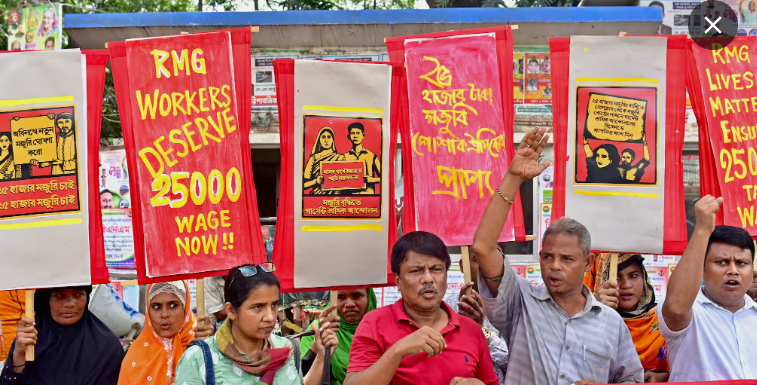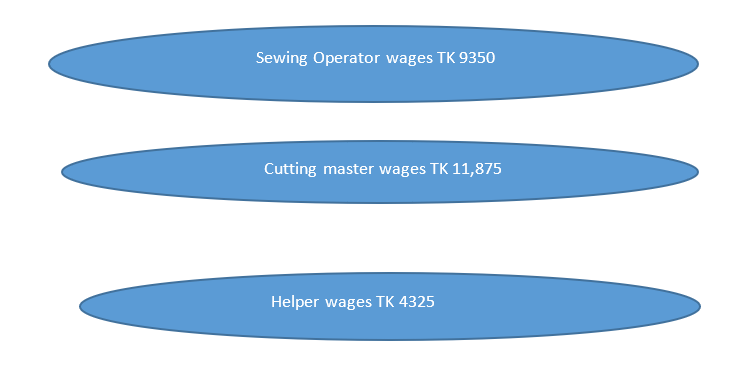- Your cart is empty
- Continue Shopping

A Tale of Wage Crisis in Bangladesh
Bangladesh is the second largest exporter in the $ 45 billion ready-made garment (RMG) industry with 7.9% of the global market. There are 65,000 manufacturing units of apparel engaging more than millions of people – of them about 78% are dedicated to the labor market. These factories are operating without any formal rules and regulations As a result none of the workers at the local garment factories enjoy institutional practices like contract agreements, standard wage rates, and regular working hours.
Bangladesh factory is always under scrutiny for low wages for employees. Tens of thousands of workers have taken to the streets demonstrating for higher wages. the current wage scenario of the country is an average of $75.From the recent studies and FGD (Focus Group Discussion) on wages and benefits in local RMG industries by major apparel hubs in Bangladesh, it was found that no standard salary system exists in local RMG 80% of the workers receive wages in piece rate, but the base rate in the local RMG industry was fixed 10 years ago. Findings show that on average a worker works 11.5 hours a day and six days a week.
One TK = $ 0.069

Paradoxical Impact of Minimum Wages
The Bangladesh RMG sector has not only economically benefitted the country, but also provided many benefits to the factory owners. Bangladesh RMG factory exports goods to international brands at a lower price compared to other countries as China, India Vietnam, Cambodia, Pakistan, and Thailand This is mainly due to low wages for the RMG workers in Bangladesh. To ensure low costs for the international brands, the factory owners tend to cut expenses where possible, especially related to the expenditure required to ensure a safe and healthy workplace and reasonable wages for the RMG workers.
RMG Worker’s minimum wages are not upgraded regularly in Bangladesh and workers have to be satisfied with a variety of bonuses. These bonuses are if they do not take any leave in a particular month.to receive these bonuses workers continue working to fulfill production targets. As a result, RMG owners continue to exploit workers and take extra work for low wages.
According to Global Wage Report 2020-21 wages and minimum wages at the time of COVID-19 published recently by ILO Bangladesh standing is at the bottom of South Asia and the Asia Pacific region with regard to the minimum wages More importantly, the minimum wages in Bangladesh fall below the international recognized poverty line, as the amount was only $48 per months in terms of purchasing power parity (PPP) during 2019.
Wages as per ESG metrics and SDG
As per ILO, China pays the highest wages in the Asia Pacific region, based on ESG metrics minimum wage in Bangladesh is $113 although the average wage in the region was only $249.Other developed countries like Indonesia, Thailand, Cambodia, India, and Pakistan also have very high wages compared to the status of Bangladeshi workers. Currently, Bangladeshi worker getting a pay of $ 55 and they are demanding three times their wages
Current wages Scenario
| Current wages | |
| China (Guangdong) | $600 |
| Indonesia | $311 |
| Thailand | $217 |
| Cambodia | $194 |
| India | $168 |
| Pakistan | $142 |
| Bangladesh(proposed) | $113 |
Current scenario of protest
Bangladesh garment manufacturer on Saturday shuttered 150 factories and police charges for 11,000 workers in connection with violent protests demanding higher wages. Due to this impact, the main exports supply for top brands Levi’s, H&M, and Zara .violent protest demanding better pay erupted last month, with at least three workers killed and more than 70 factories ransacked or damaged. A government-appointed panel raised the sector wage by 56.25 % on Tuesday, but garment workers have rejected the hike, instead demanding a 23,000 taka minimum wage.
